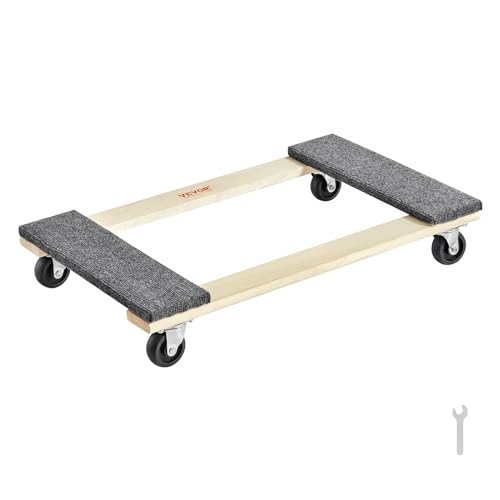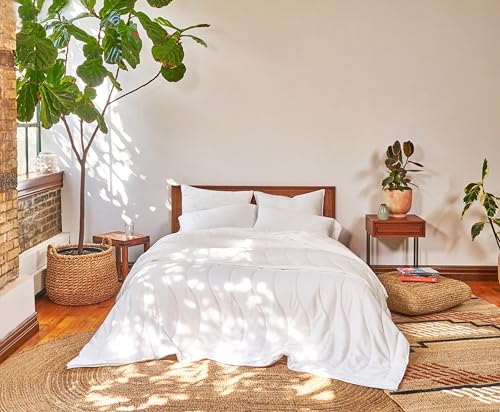Introduction
Coffee stains on your mattress can be frustrating and unsightly, but the good news is they’re often easier to remove than you might think. The key to successfully removing coffee stains is acting quickly and using the right cleaning methods that won’t damage your mattress. Whether you spilled a fresh cup or noticed an old stain, this guide will help you restore your mattress’s cleanliness and freshness with safe, effective techniques.
Did you know that untreated stains can lead to odors and even mold growth inside your mattress? This makes timely stain removal not just about appearance but also about hygiene and health. From household items like baking soda and vinegar to specialized cleaning products, you’ll learn step-by-step methods to tackle coffee stains of all ages.
Best Cleaning Products for Removing Coffee Stains from Mattresses
Choosing the right cleaning products can make all the difference when it comes to effectively removing coffee stains without harming your mattress. Here are three top products that consistently deliver great results:
1.Bissell SpotClean ProHeat Portable Spot Cleaner
- EVERY PURCHASE SAVES PETS. BISSELL proudly supports BISSELL Pet Foundation and…
- INSTANTLY & PERMANENTLY REMOVES STAINS. Permanently removes tough stains like…
- ELIMINATES HOUSEHOLD ODORS. Leaves a long-lasting, fresh scent.
This compact machine uses heat and suction to lift stubborn coffee stains deep from mattress fibers. Its portability makes it ideal for targeted cleaning, and it’s gentle enough to use regularly without damaging fabric.
2.Folex Instant Carpet Spot Remover
- Removes pet accidents, grease, oil, ink, red wine, coffee, blood, rust, food,…
- Water-based, non-flammable and odor free
- VOC, solvent, and petroleum free
Known for its powerful stain removal, Folex works on various surfaces including mattresses. It’s non-toxic, requires no rinsing, and breaks down coffee stains quickly, saving you time and effort.
3.Resolve Upholstery Cleaner Spray
- NEUTRALIZES ODORS and lifts out stains
- PENETRATES set-in stains
- STAIN-LIFTING POWER WORKS ON: wool, nylon, upholstery, synthetic & stain…
This spray is formulated specifically for upholstery and mattresses. It effectively dissolves coffee stains and neutralizes odors, leaving your mattress fresh and clean without harsh chemicals.
How to Prepare Your Mattress for Coffee Stain Removal
Proper preparation is essential to effectively remove coffee stains from your mattress without causing damage. Taking the right initial steps sets the foundation for successful stain treatment and prevents spreading or setting the stain deeper.
First, act quickly. The sooner you address a coffee spill, the easier it will be to remove. Fresh stains are far less stubborn than dried ones. Here’s how to prepare:
- Remove bedding: Strip sheets, pillowcases, and mattress protectors to access the stained area directly. Wash bedding immediately if stained.
- Blot, don’t rub: Use a clean, dry microfiber cloth or paper towel to gently blot excess coffee. Avoid rubbing as it pushes the stain deeper into mattress fibers.
- Ventilate the area: Open windows or use a fan to ensure good airflow. This helps moisture evaporate during cleaning, reducing the risk of mold.
- Gather cleaning supplies: Have your chosen stain removers, clean cloths, a spray bottle with water, and gloves ready before you start.
- Test cleaners: Always test any cleaning solution on a small, inconspicuous mattress area first to check for colorfastness or damage.
- Avoid soaking: Mattresses absorb moisture easily, so never saturate the area with liquid. Use spray bottles and damp cloths for controlled application.
Step-by-Step Guide to Removing Fresh Coffee Stains
Removing fresh coffee stains from your mattress can be straightforward if you act quickly and follow the right process. Here’s a simple, effective method to tackle fresh spills:
Blot the Spill Immediately
- Use a clean, dry cloth or paper towel to gently blot the coffee stain.
- Avoid rubbing, as this spreads the stain and pushes it deeper into the fabric.
Prepare a Cleaning Solution
- Mix one tablespoon of liquid dish soap with two cups of cold water.
- Alternatively, you can mix equal parts white vinegar and cold water for a natural cleaning solution.
Apply the Solution
- Lightly spray or dab the cleaning solution onto the stain using a spray bottle or cloth.
- Use a clean cloth to gently blot the area, working from the outside of the stain inward to prevent spreading.
Rinse with Cold Water
- Dampen a separate cloth with cold water and blot the treated area to remove any soap or vinegar residue.
Dry the Area Thoroughly
- Blot the area with a dry towel to remove excess moisture.
- Allow the mattress to air dry completely, using a fan or opening windows to speed up drying.
Optional: Use Baking Soda for Odor Removal
- Once dry, sprinkle baking soda over the treated area.
- Leave it for several hours or overnight, then vacuum to remove odors and any residual moisture.
How to Remove Old or Set-In Coffee Stains from Your Mattress
Old coffee stains can be tougher to remove, but with patience and the right approach, you can significantly reduce their appearance or eliminate them entirely. Here’s a reliable method to tackle set-in stains:
Vacuum the Area
- Start by vacuuming the stained area to remove dust and loose debris. This helps prevent dirt from mixing with cleaning solutions.
Create a Stronger Cleaning Solution
- Mix 1 cup of warm water with 1 tablespoon of liquid dish soap and 2 tablespoons of white vinegar.
- This combination helps break down stubborn coffee stains and neutralizes odors.
Apply the Solution
- Using a spray bottle or a clean cloth, apply the solution generously to the stained area.
- Allow it to sit for 10-15 minutes to penetrate the stain.
Gently Scrub the Stain
- Use a soft-bristle brush or clean cloth to gently scrub the stain in circular motions.
- Avoid aggressive scrubbing that might damage mattress fabric.
Blot Excess Moisture
- Use a dry microfiber cloth or towel to blot and soak up excess liquid and loosened stain particles.
Rinse and Dry
- Lightly spray cold water to rinse out cleaning residues, then blot dry thoroughly.
- Use a fan or open windows to promote fast drying and prevent mold growth.
Repeat if Necessary
- Older stains may require multiple treatments. Repeat the process until you achieve the desired result.
Preventing Coffee Stains and Maintaining a Clean Mattress
Prevention is always better than cure, especially when it comes to protecting your mattress from coffee stains. Implementing simple habits and maintenance routines can keep your mattress fresh and stain-free for longer. Here are practical tips to help you prevent coffee stains and maintain mattress cleanliness:
- Avoid Eating or Drinking in Bed
- The most effective way to prevent coffee stains is to keep food and drinks away from your bed entirely.
- Designate a separate area for your coffee to avoid accidental spills.
- Use a Mattress Protector
- Invest in a high-quality, waterproof mattress protector.
- These covers create a barrier that prevents liquids from seeping into the mattress fibers, making cleanup easier.
- Clean Spills Immediately
- If spills happen, act quickly by blotting and cleaning the area to prevent stains from setting.
- Keep a small cleaning kit nearby with cloths, spray bottles, and gentle cleaners.
- Regular Mattress Cleaning
- Vacuum your mattress monthly to remove dust, dirt, and allergens that can accumulate.
- Sprinkle baking soda occasionally to neutralize odors and keep your mattress smelling fresh.
- Air Out Your Mattress
- Let your mattress breathe by removing bedding and opening windows or using a fan periodically.
- This reduces moisture build-up and discourages mold growth.
Conclusion
Removing coffee stains from your mattress doesn’t have to be a stressful chore. By acting quickly and using the right methods, you can effectively restore your mattress and maintain its freshness. Whether dealing with fresh spills or stubborn old stains, gentle cleaning solutions like dish soap, vinegar, and baking soda offer safe, affordable options that protect your mattress fabric.
Remember these key points:
- Always blot stains immediately—avoid rubbing.
- Test cleaning solutions on a small area first.
- Use a mattress protector to prevent future stains.
- Regular cleaning and airing out help maintain mattress hygiene.
Frequently Asked Questions About Removing Coffee Stains from Your Mattress
Can coffee stains be completely removed from a mattress?
- Yes, most fresh coffee stains can be completely removed with prompt and proper cleaning.
- Older stains may fade significantly but sometimes require multiple treatments for full removal.
What’s the best household item to remove coffee stains from a mattress?
- A mixture of dish soap and cold water is effective for fresh stains.
- White vinegar combined with water is excellent for breaking down tougher stains and neutralizing odors.
Can I use bleach to clean coffee stains on my mattress?
- It’s best to avoid bleach as it can damage mattress fabric and foam, causing discoloration and weakening the material.
How quickly should I act after spilling coffee on my mattress?
- Immediate action is crucial; blot the spill right away to prevent it from soaking deeper.
- The sooner you treat the stain, the easier it will be to remove.
What if the stain has dried and set in?
- Use a stronger cleaning solution with vinegar and soap, let it sit, then gently scrub.
- Repeat treatments may be necessary for stubborn, old stains.
How can I prevent coffee stains on my mattress?
- Avoid drinking coffee in bed.
- Use a waterproof mattress protector.
- Clean spills immediately.
How often should I clean my mattress to keep it fresh?
- Vacuum monthly to remove dust and allergens.
- Sprinkle baking soda occasionally to absorb odors.



































